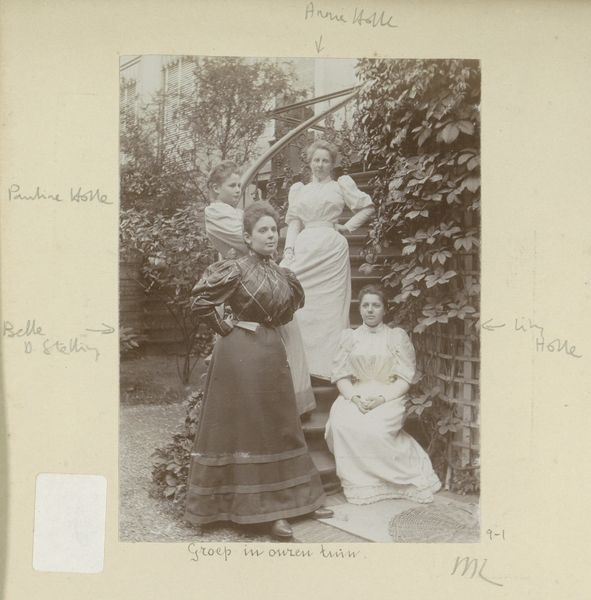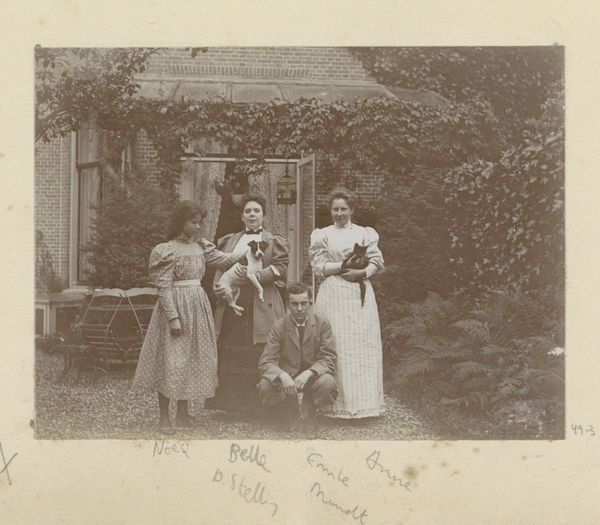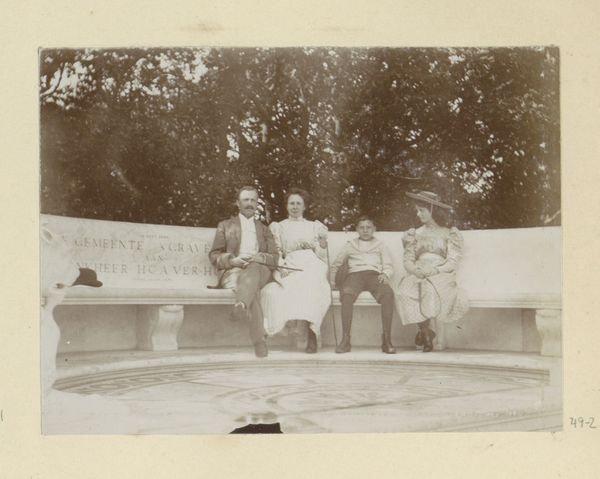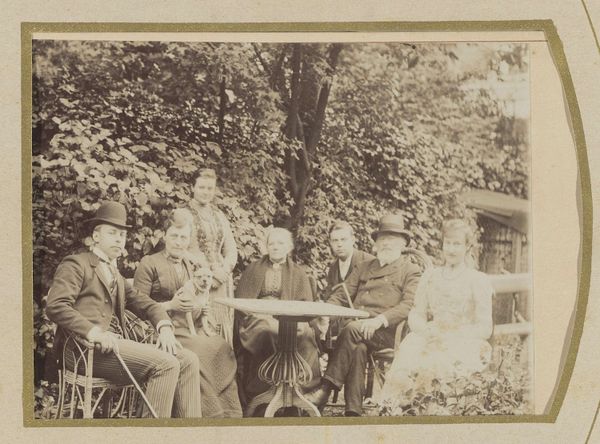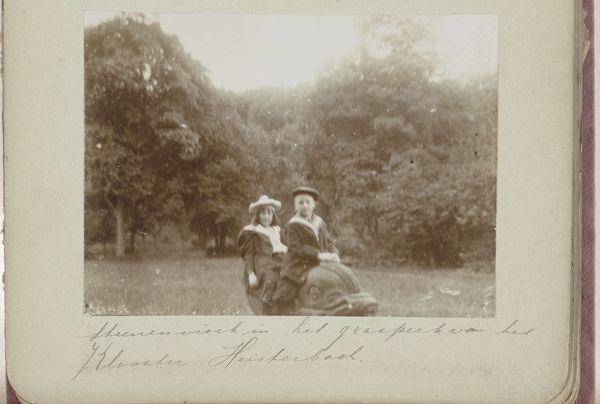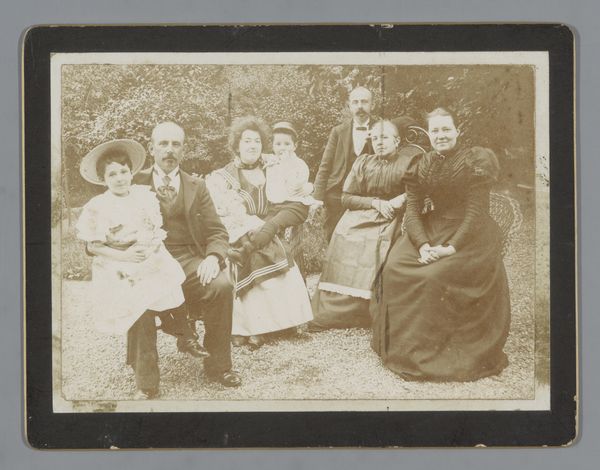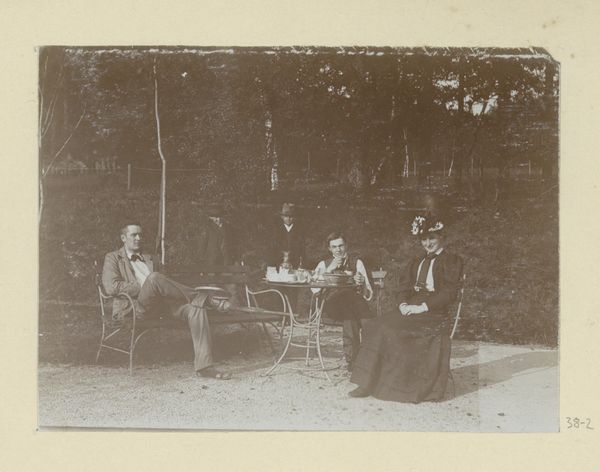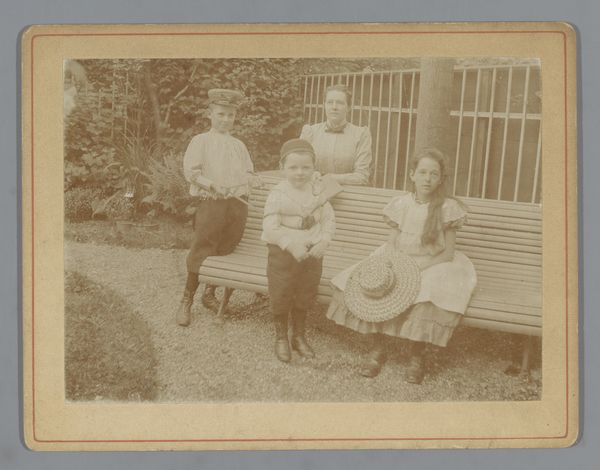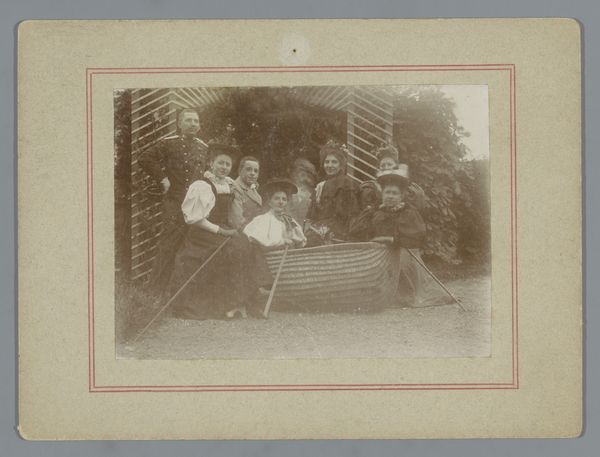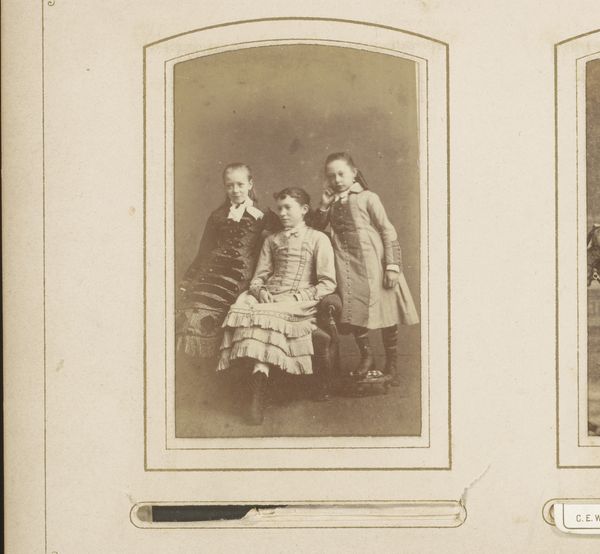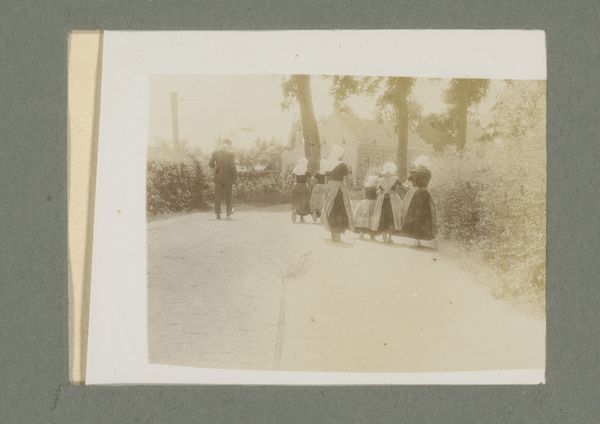
Theodoor, Annie, Way en Noesy op de Cremerbank in de Scheveningse Bosjes before 1894
0:00
0:00
Dimensions: height 80 mm, width 108 mm
Copyright: Rijks Museum: Open Domain
Editor: So, here we have a gelatin silver print from before 1894, "Theodoor, Annie, Way en Noesy op de Cremerbank in de Scheveningse Bosjes" by Hendrik Herman van den Berg. It's a formal family portrait in what appears to be a park, a pretty typical 19th-century shot, I suppose. What else is there to it? Curator: Typical, perhaps, on the surface. But let’s think about the context. Late 19th century… Photography, still relatively new, becomes a tool for memorialization, but also for constructing a particular image of the self, the family. Notice the deliberate composition: the subjects formally arranged, almost staged. It is a carefully crafted presentation of bourgeois respectability. Editor: Staged, yes. The subjects even seem a little stiff and unnatural, the way they're seated and posed. What does it signify? Curator: Precisely. Consider the power dynamics inherent in this 'family portrait'. The male figure occupies the central position, subtly asserting patriarchal dominance. The women and children are positioned around him, almost framing him, but he’s undeniably the center. How might gender and class intersect here, in terms of representation? Editor: I hadn’t considered the composition in terms of power. So, it’s not just a simple portrait, but a visual statement about social roles? Curator: Exactly. Think of pictorialism too – blurring photography with art by manipulating the image in a way to have photography gain more artistic validation. It's about reinforcing societal expectations, projecting an idealized image of domesticity and family unity, carefully managing public image and representation in a quickly modernizing world. Who benefits from this constructed narrative? Editor: Wow, I never thought about it that deeply. It’s more than just a photograph, it’s a cultural artifact loaded with meaning. Curator: Absolutely. Seeing it as an artifact gives us entry to so much about class, gender and history.
Comments
No comments
Be the first to comment and join the conversation on the ultimate creative platform.
